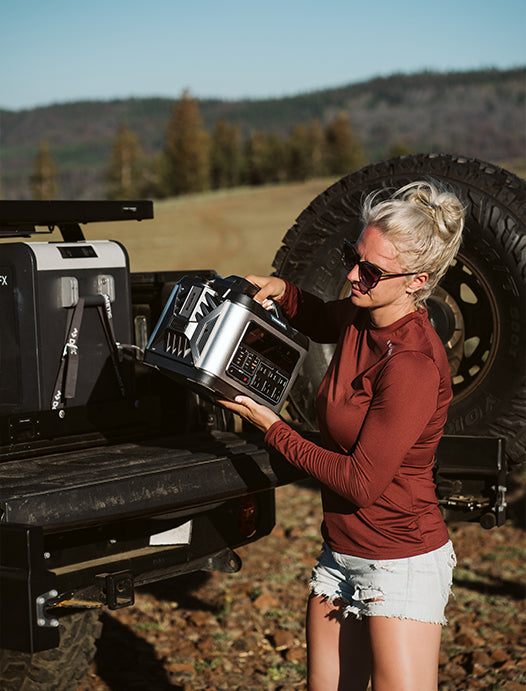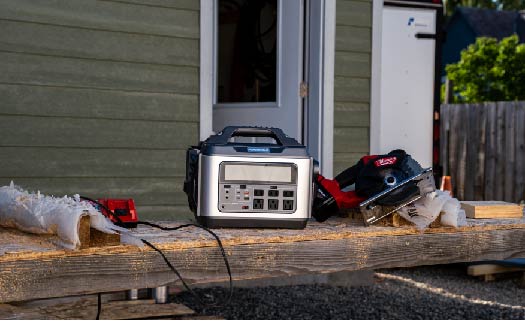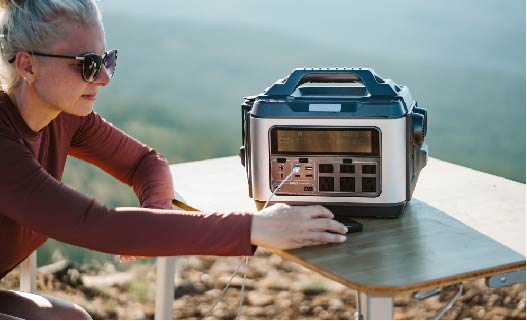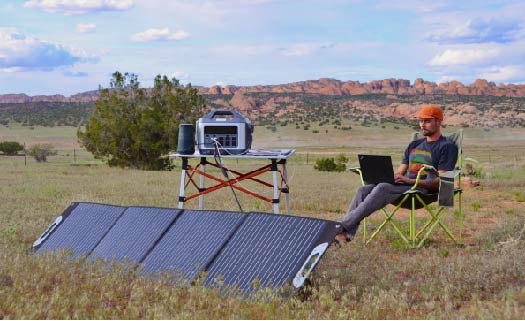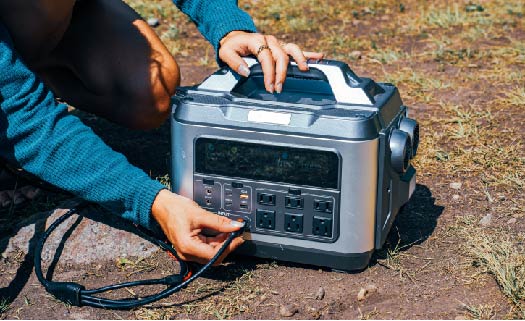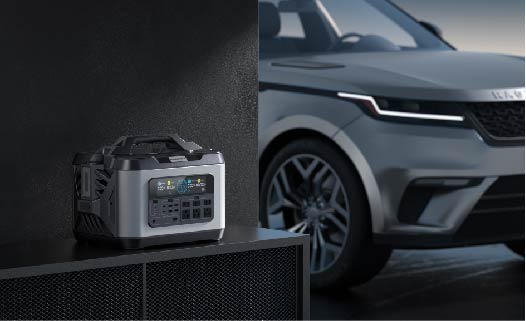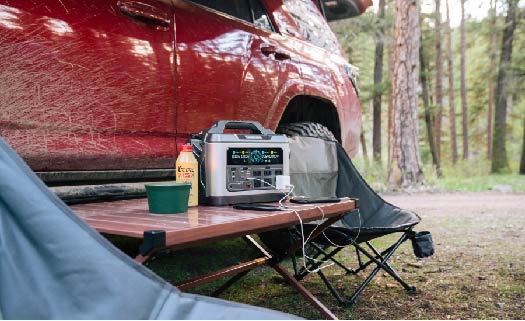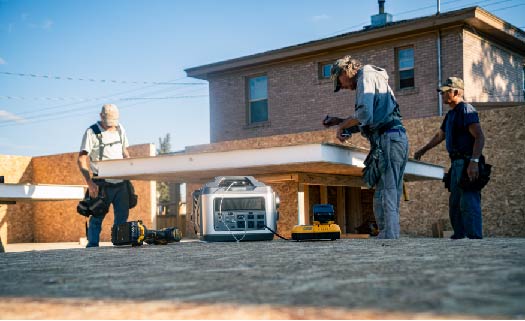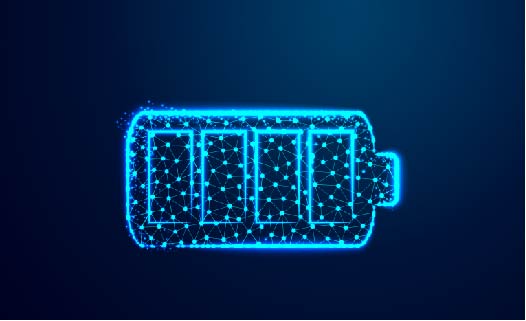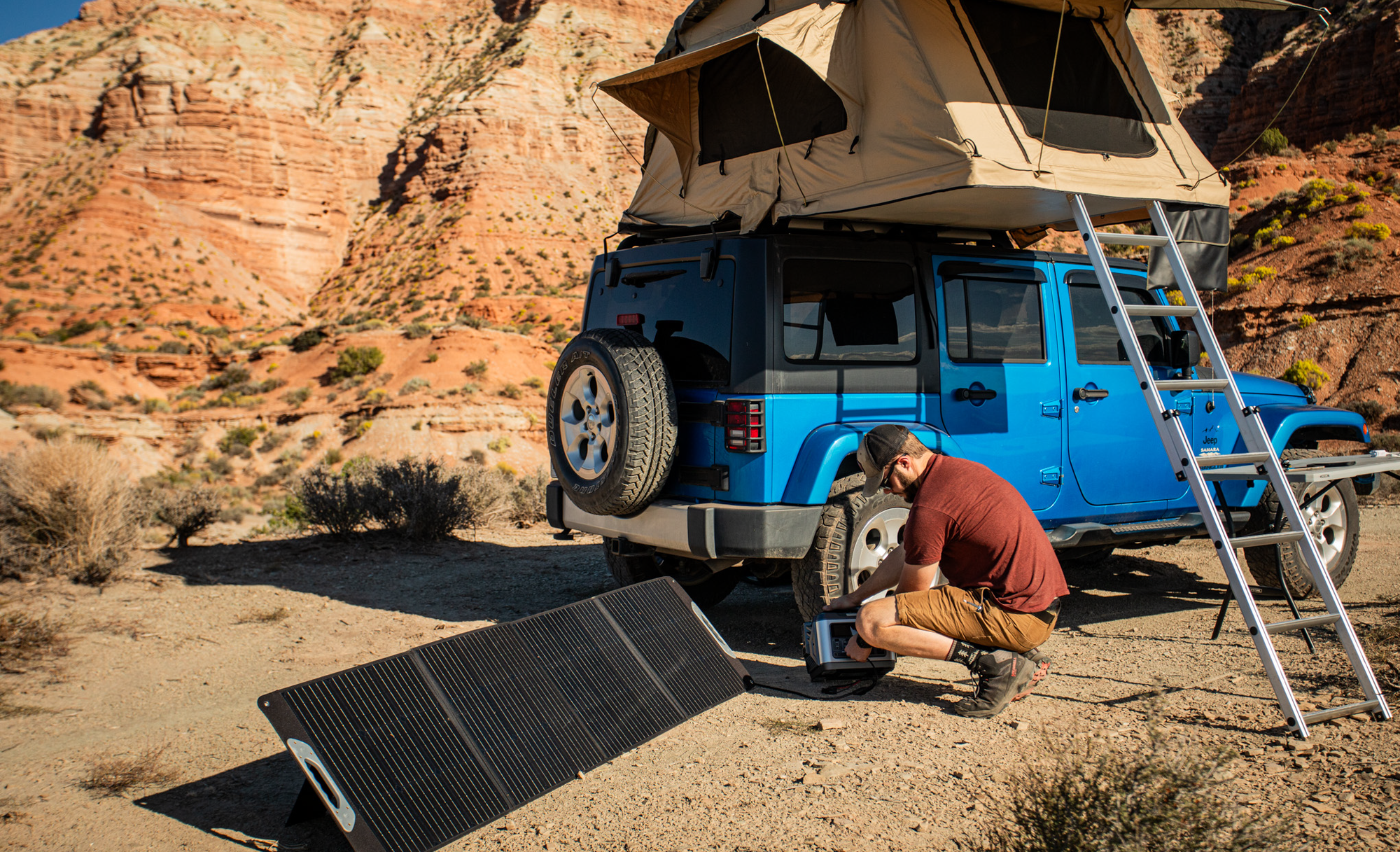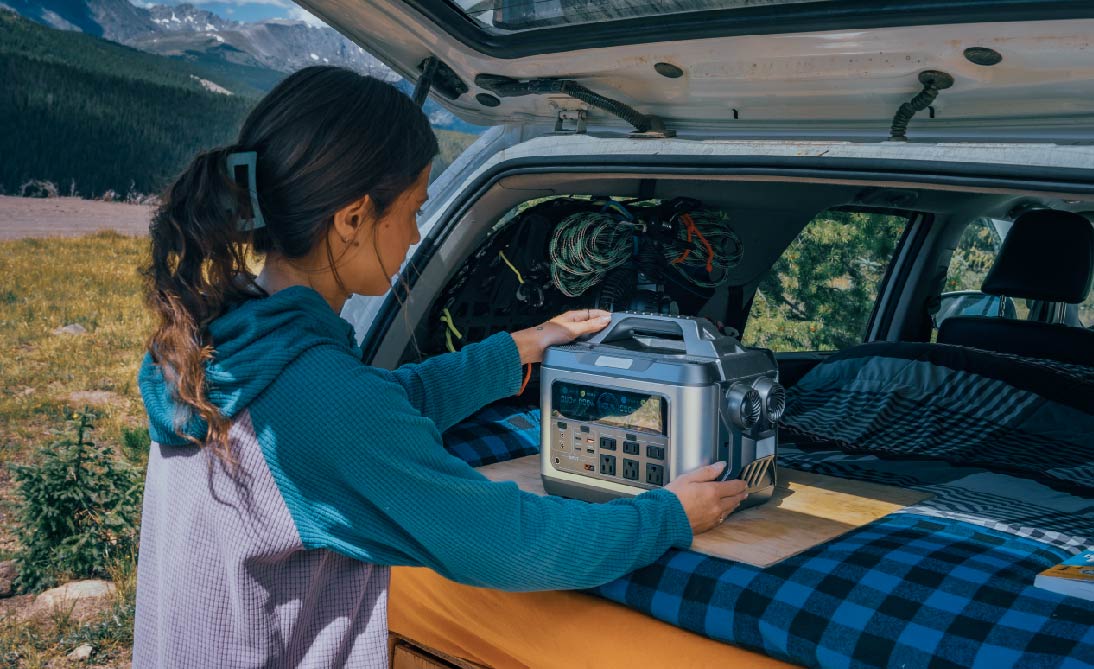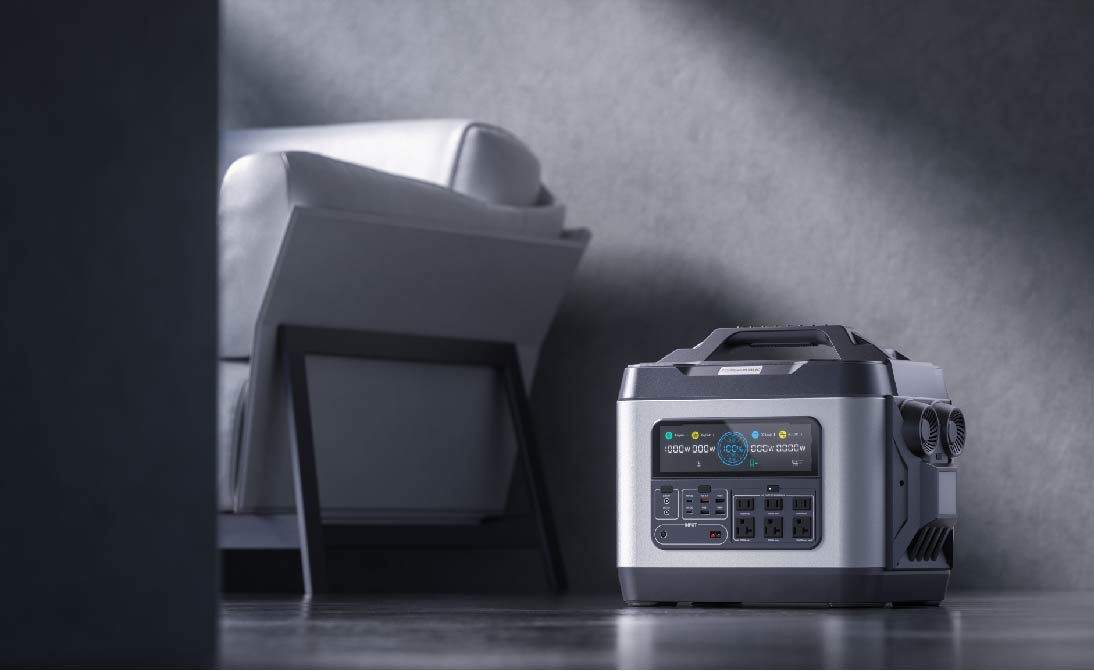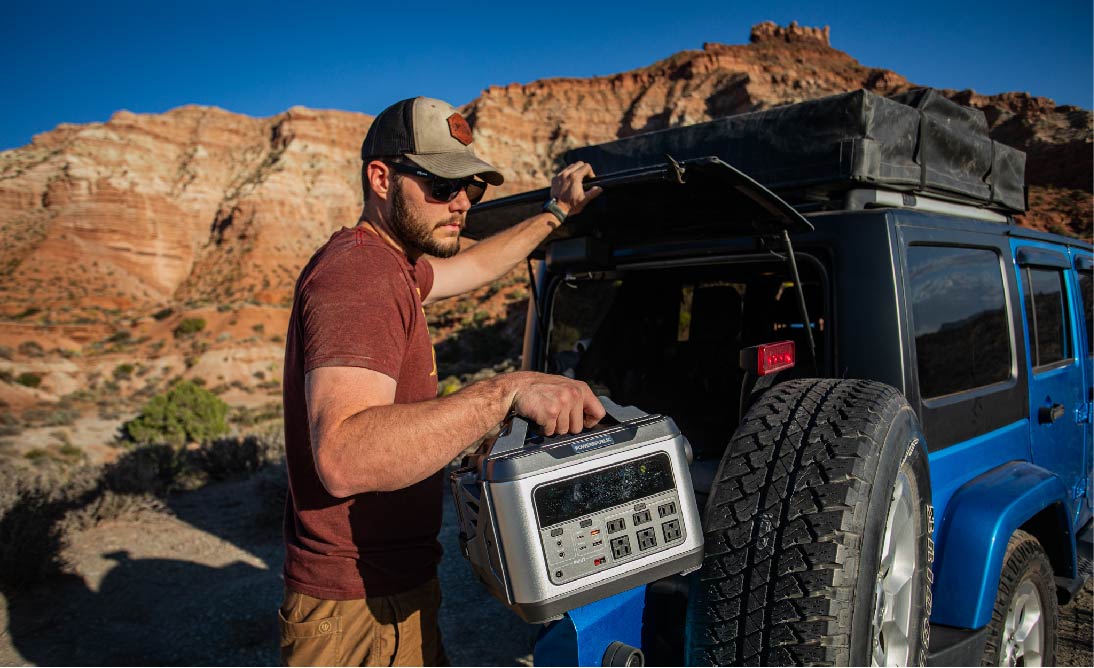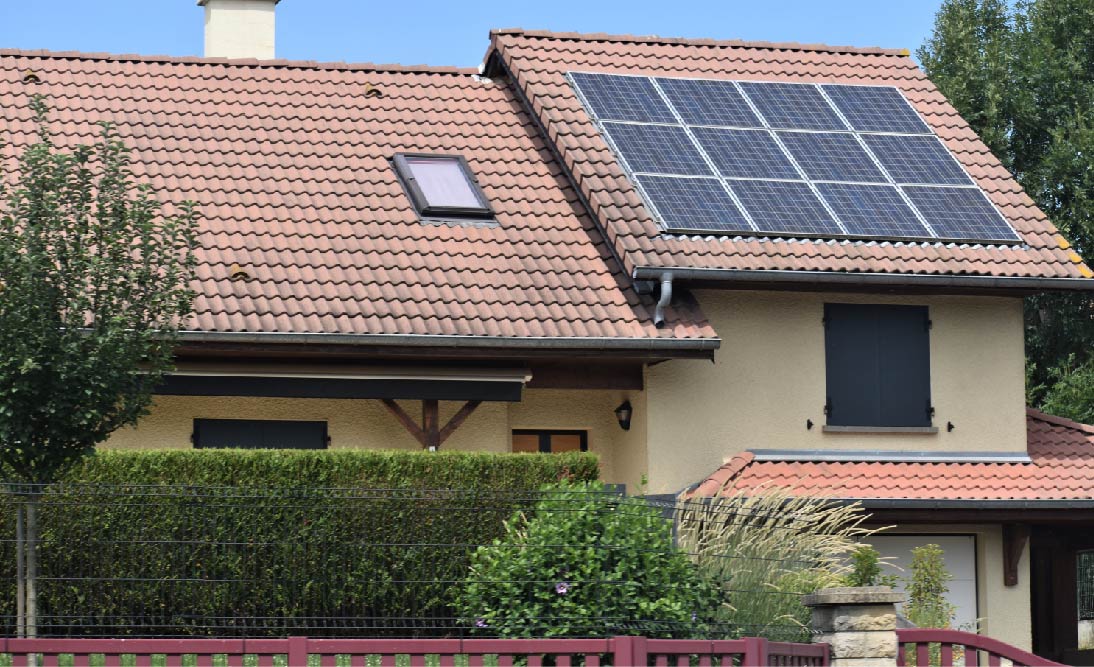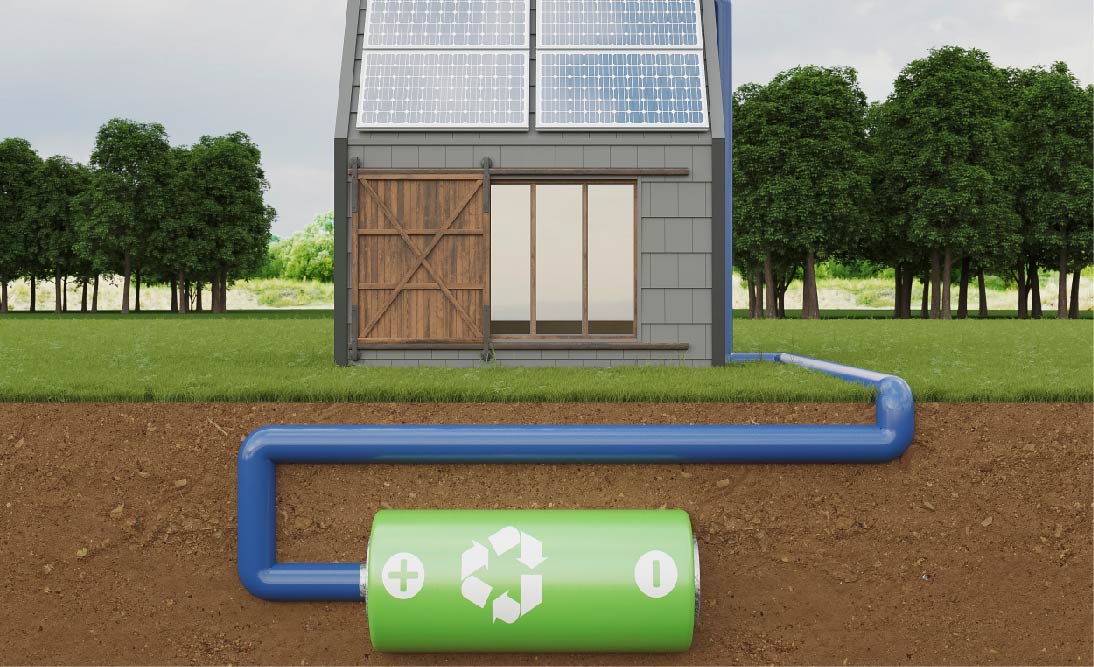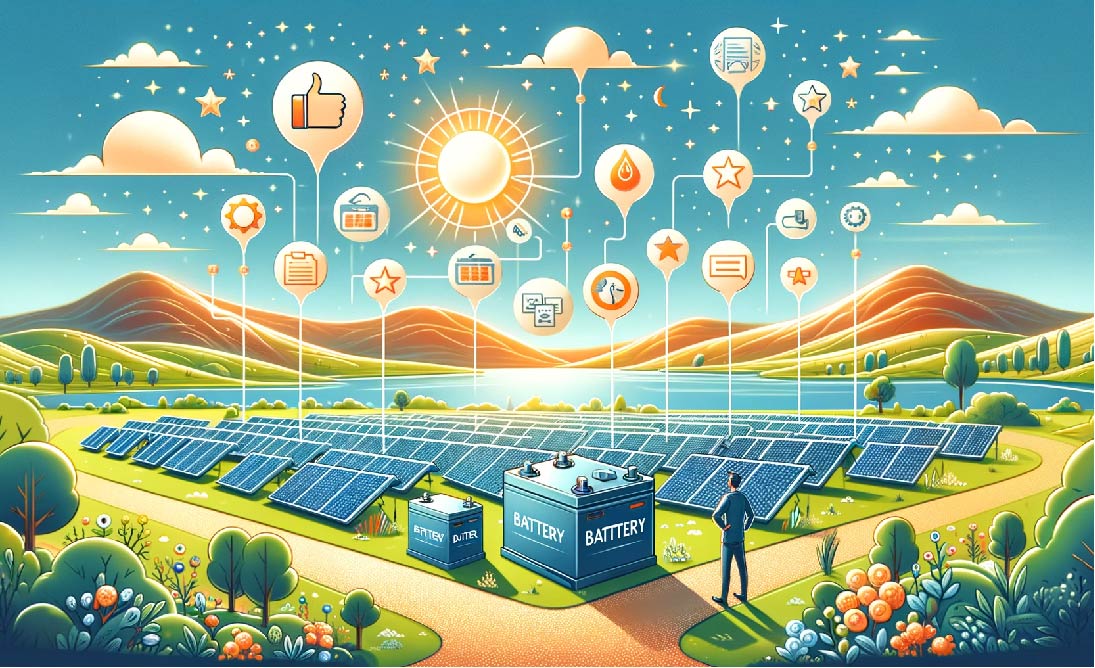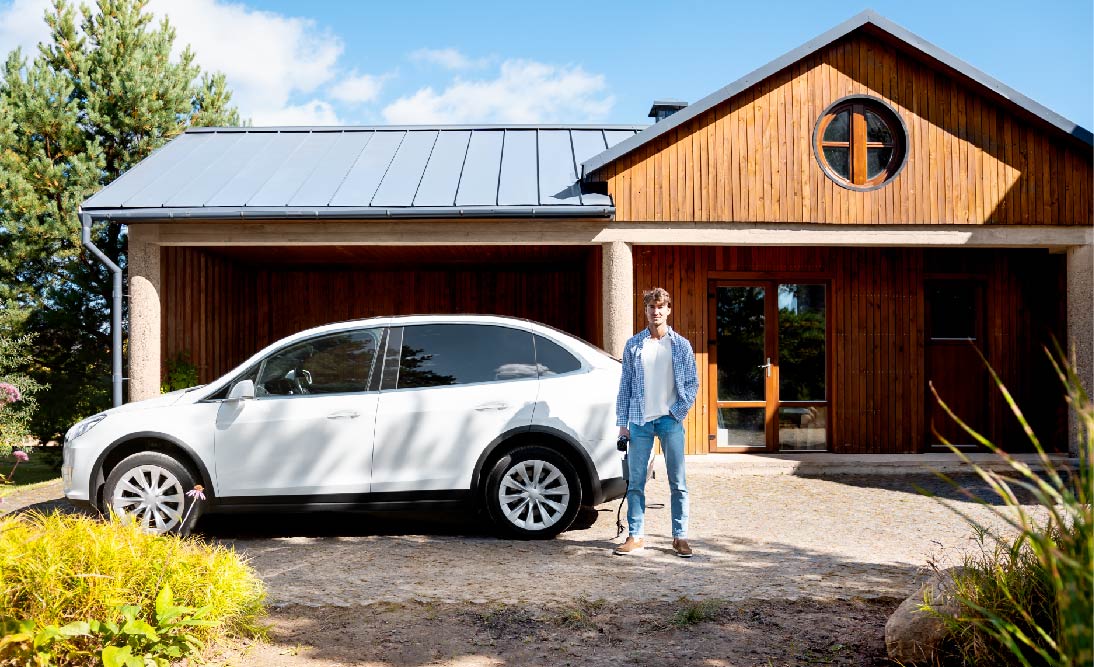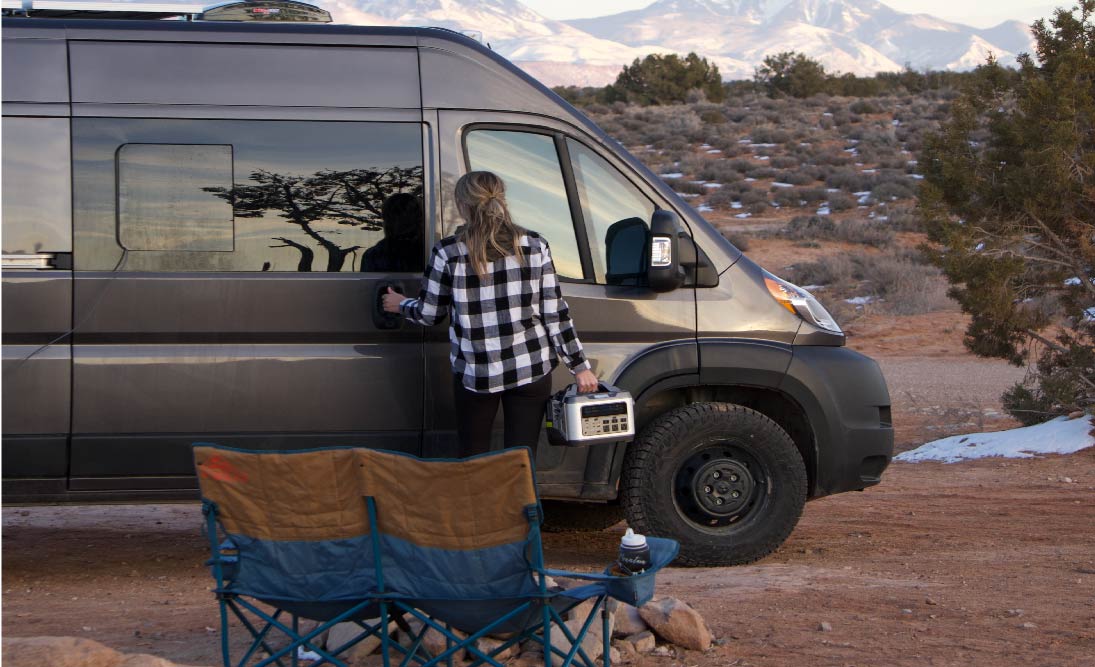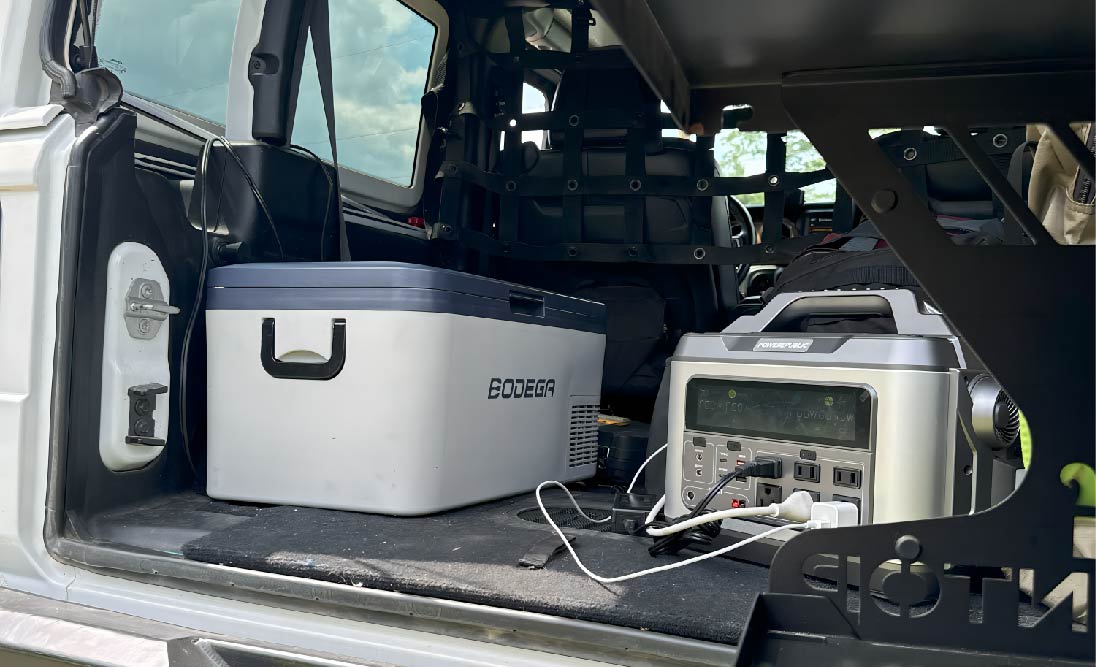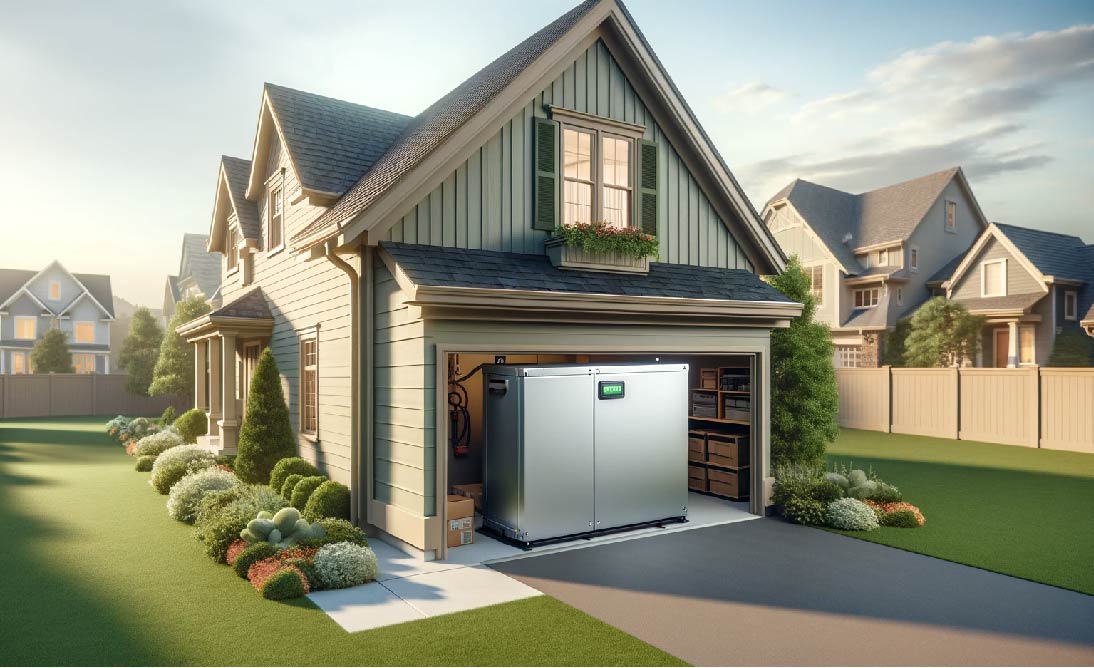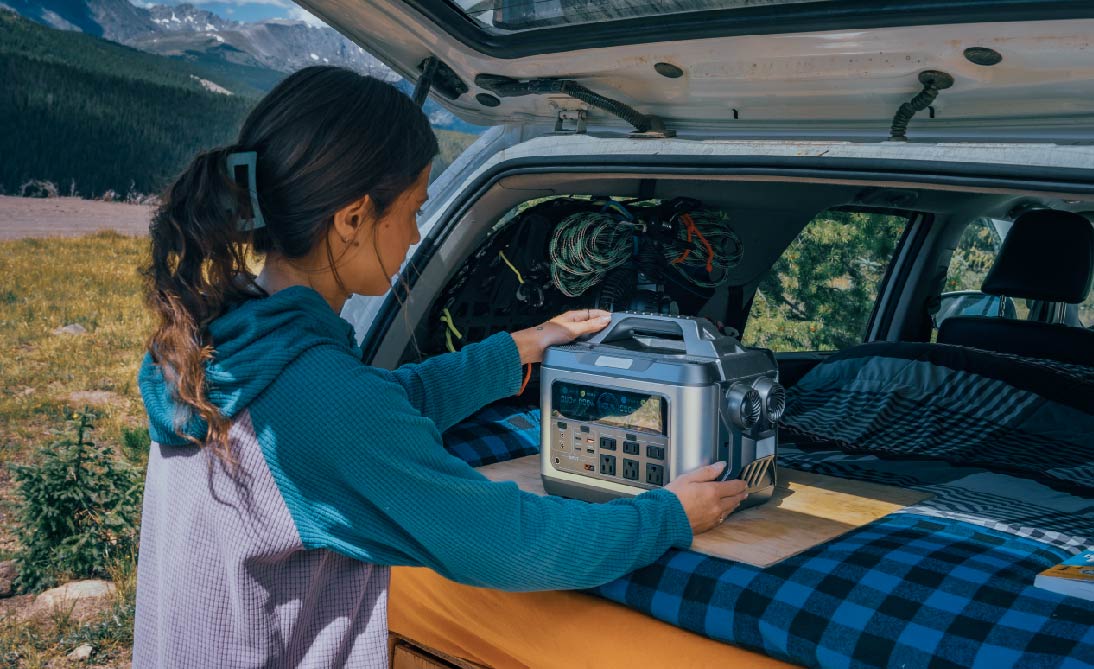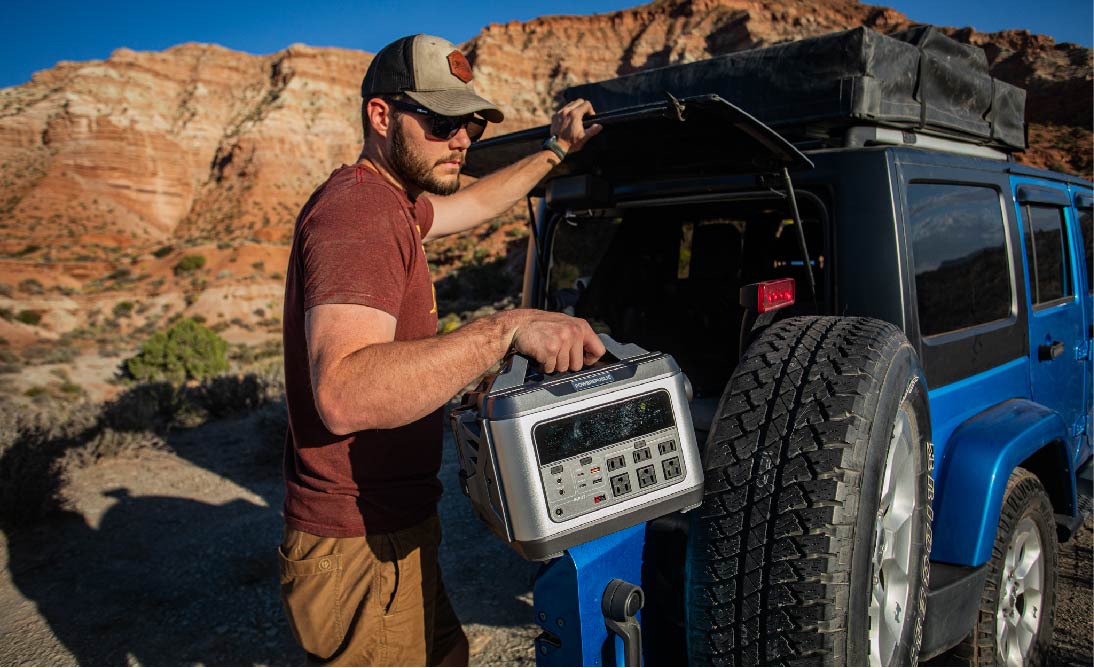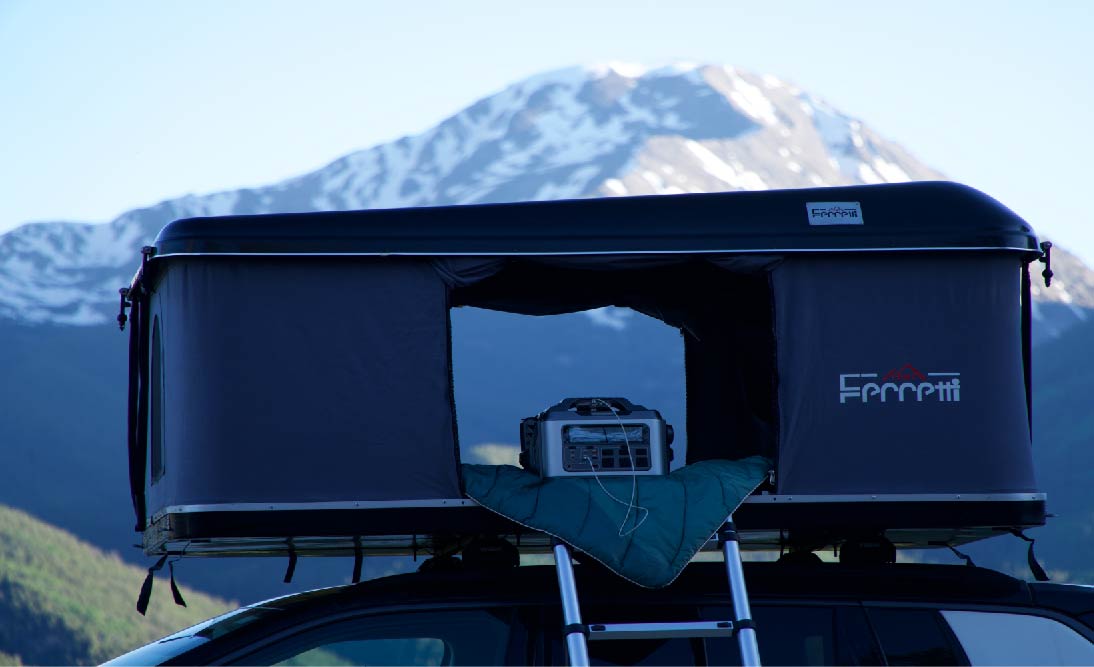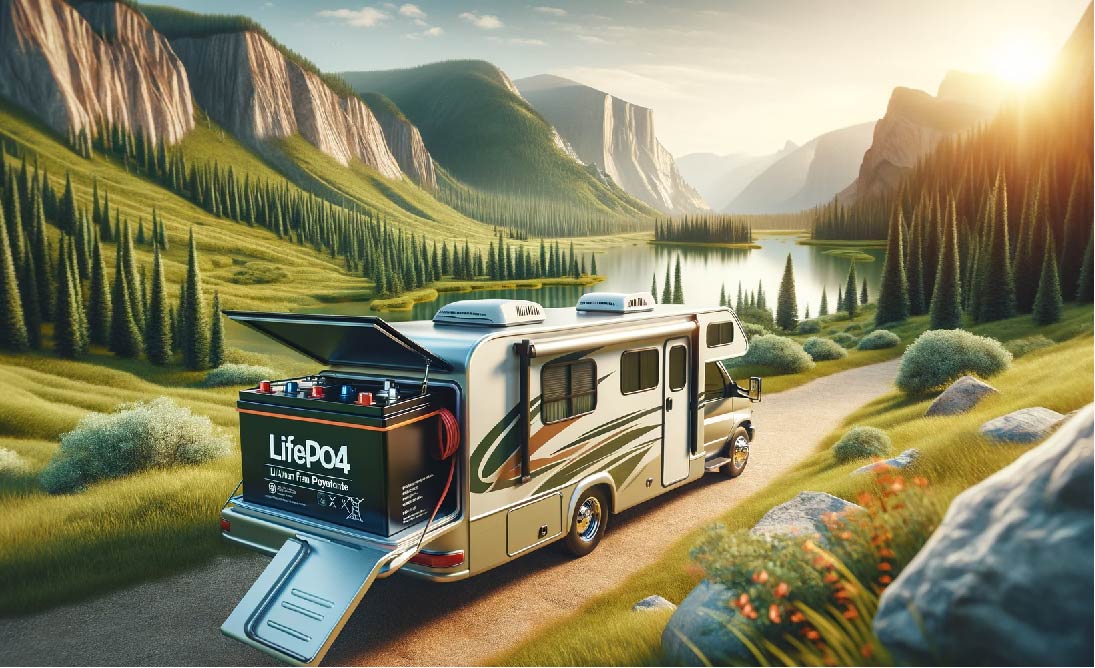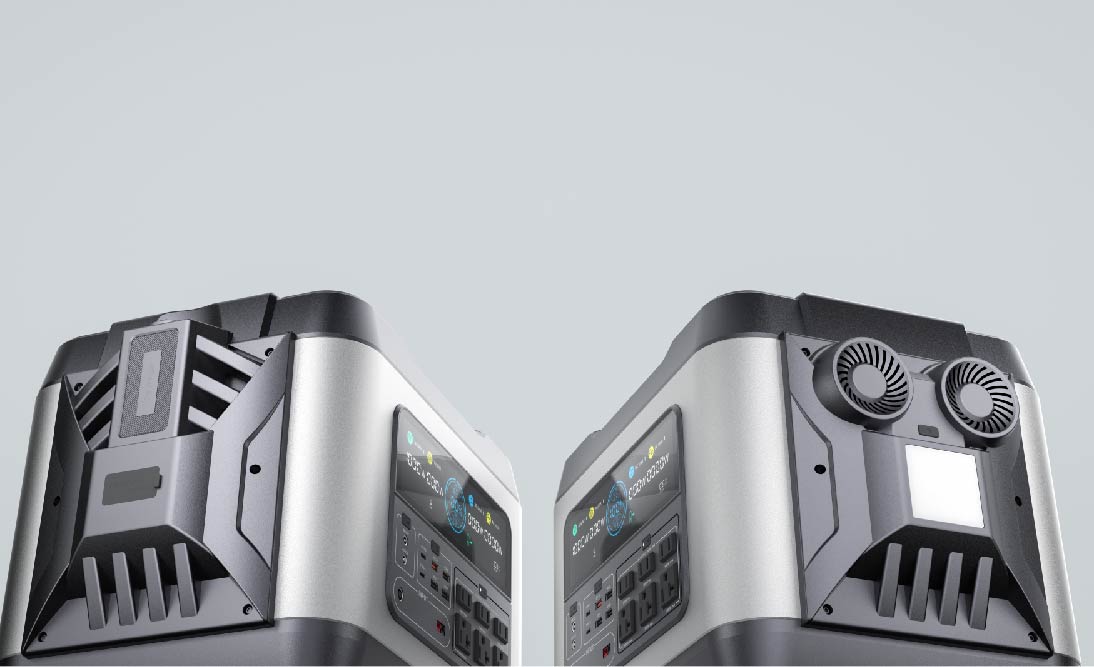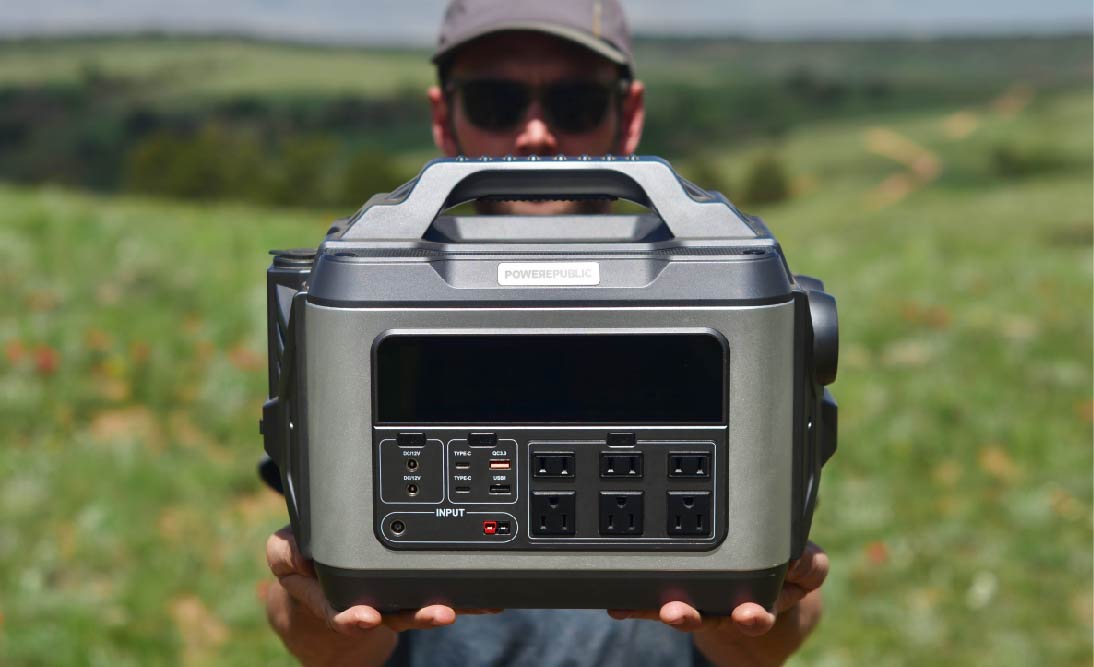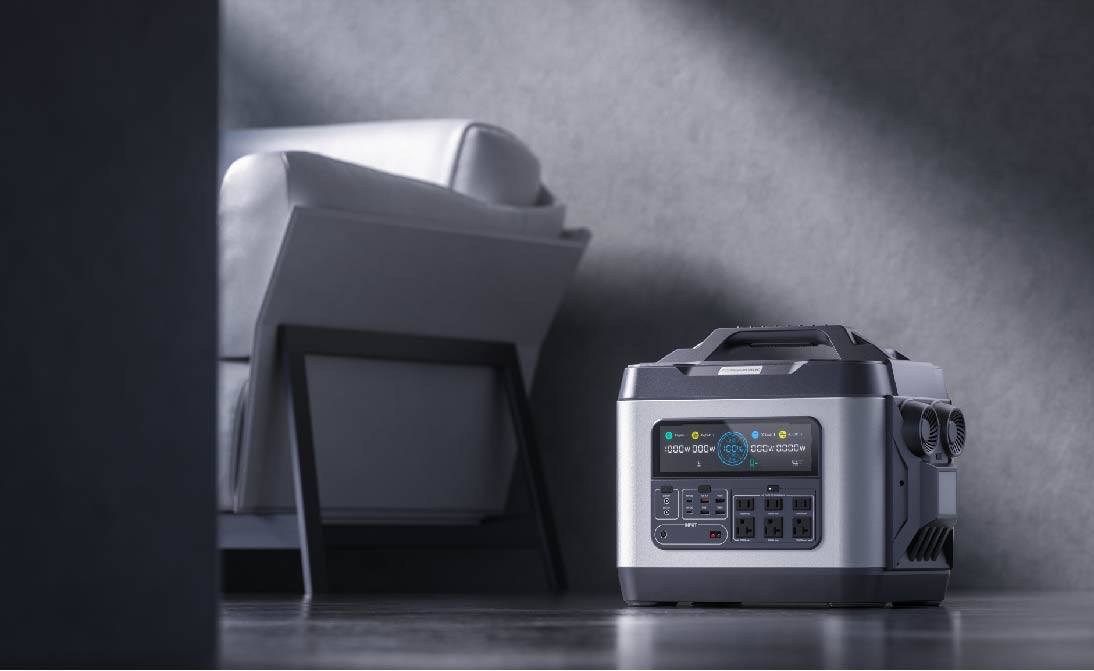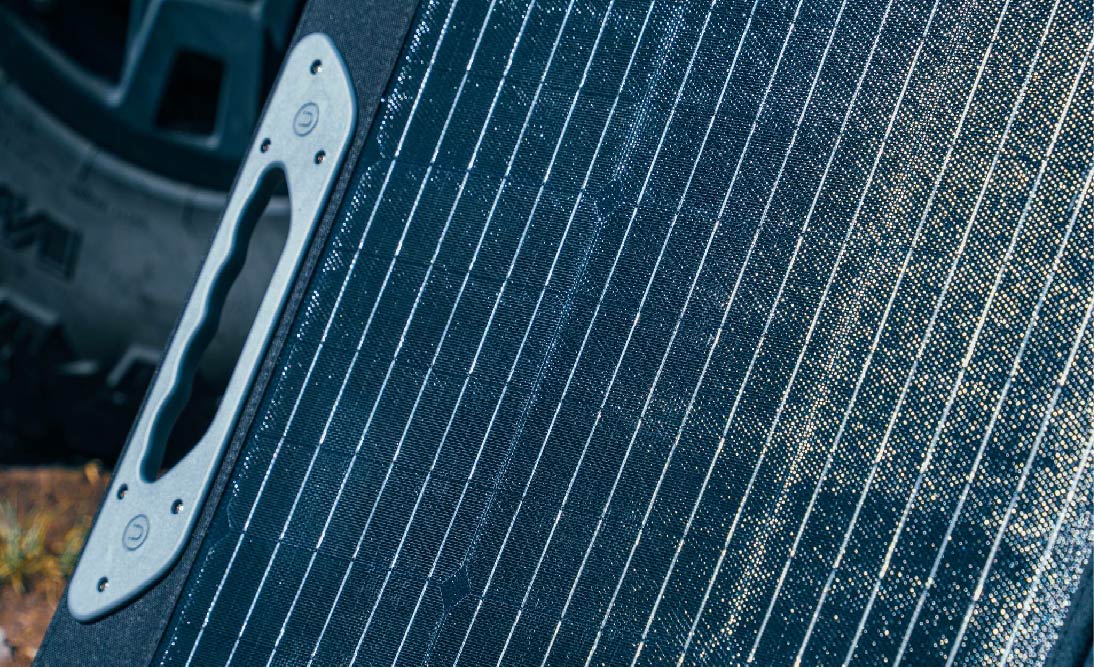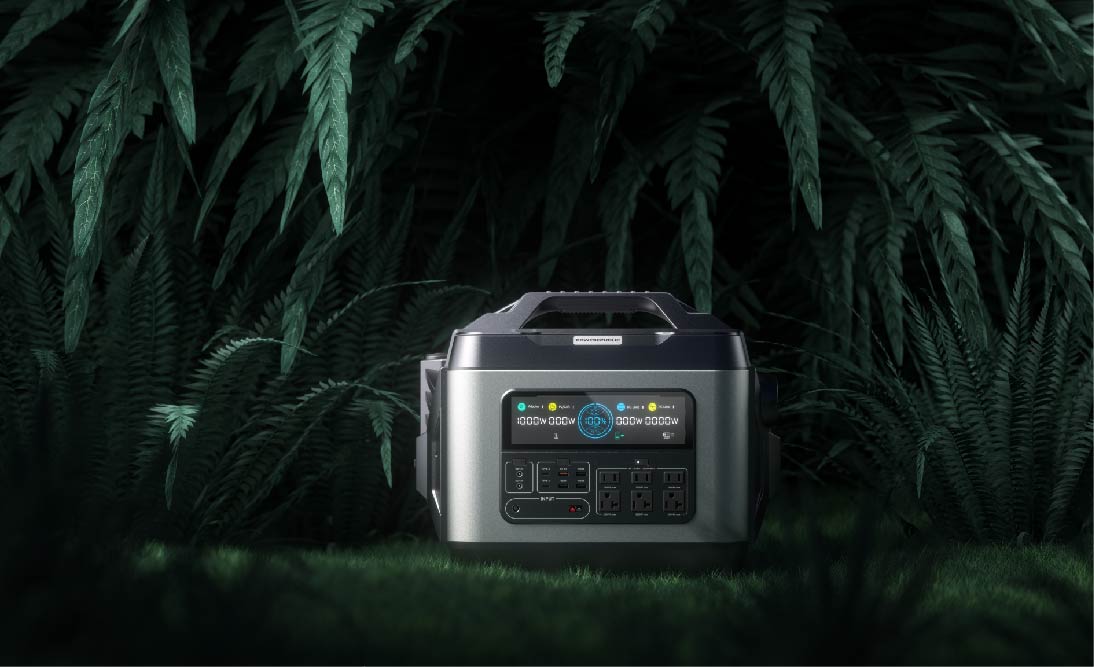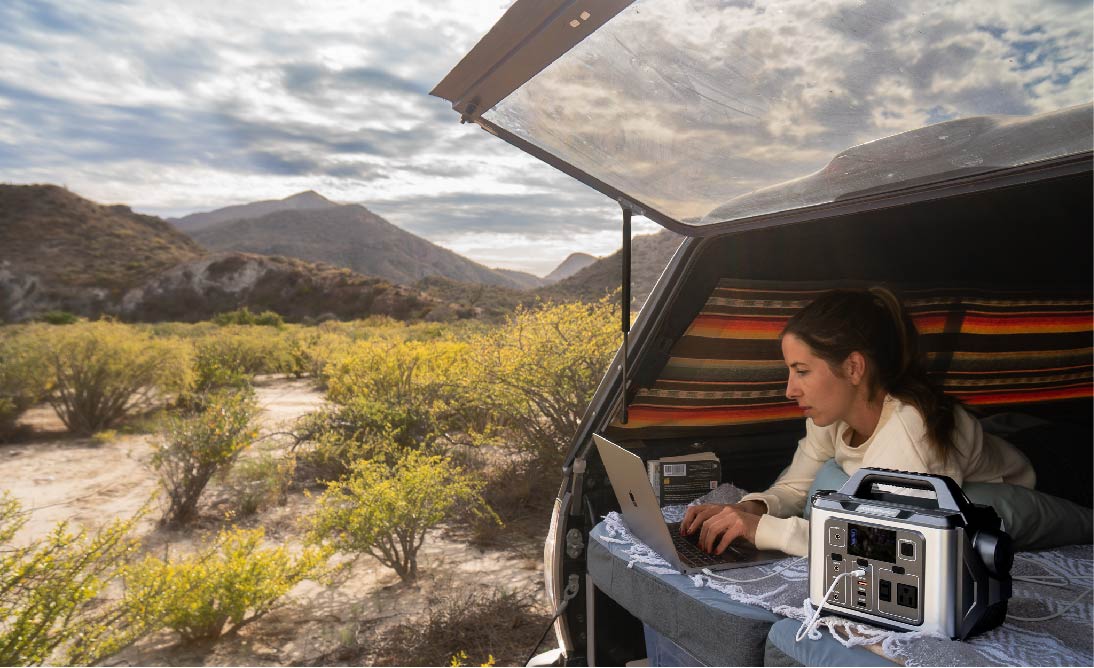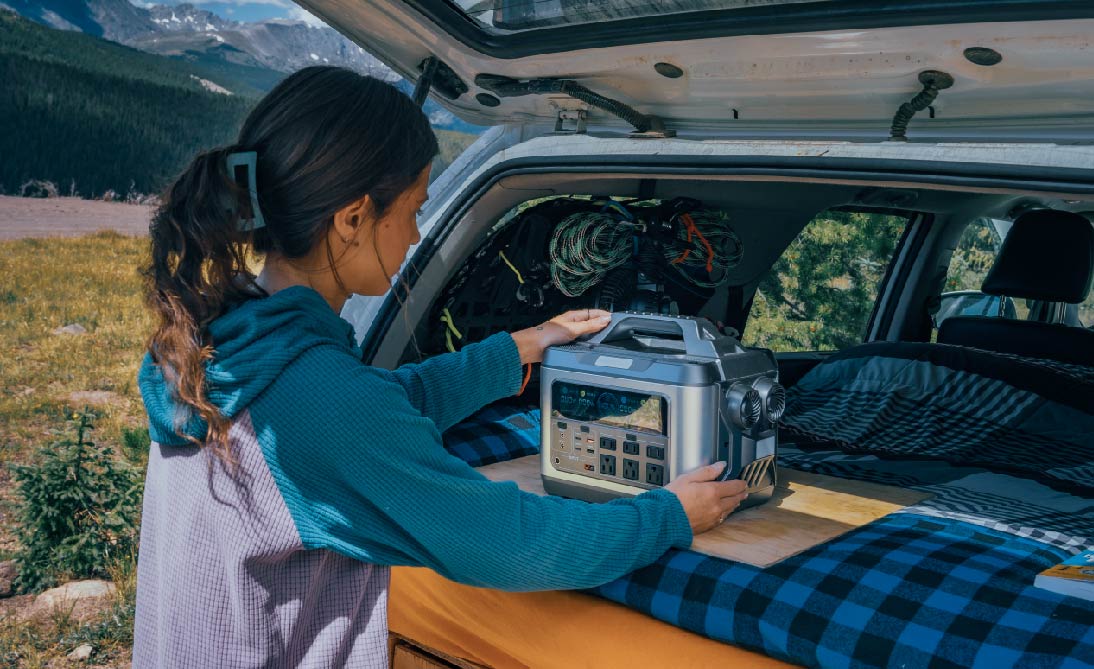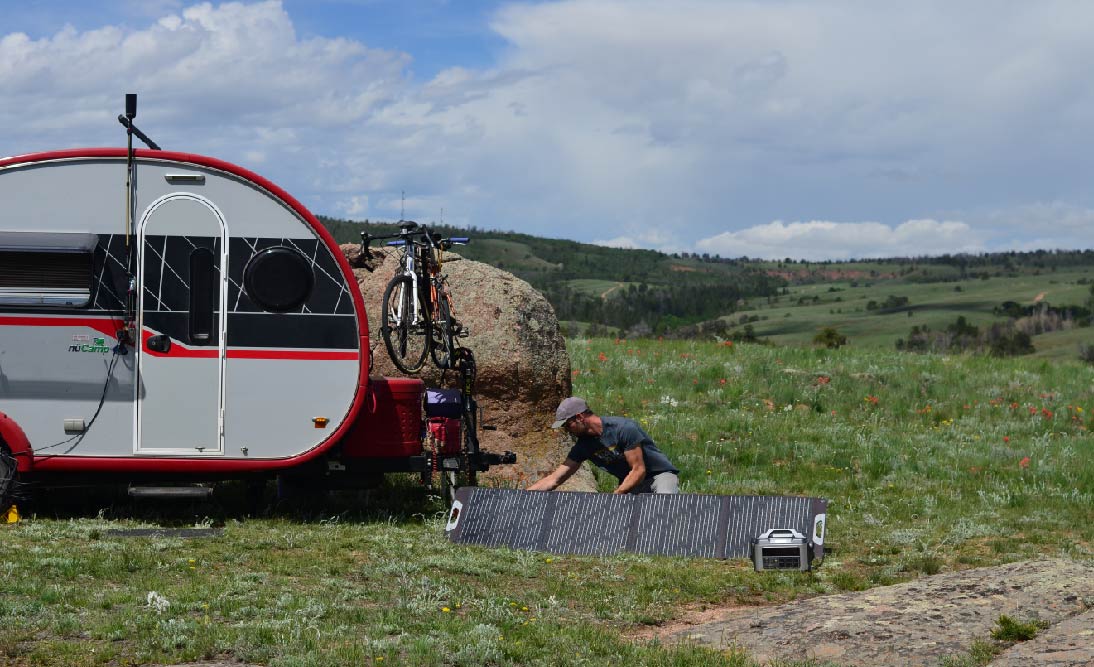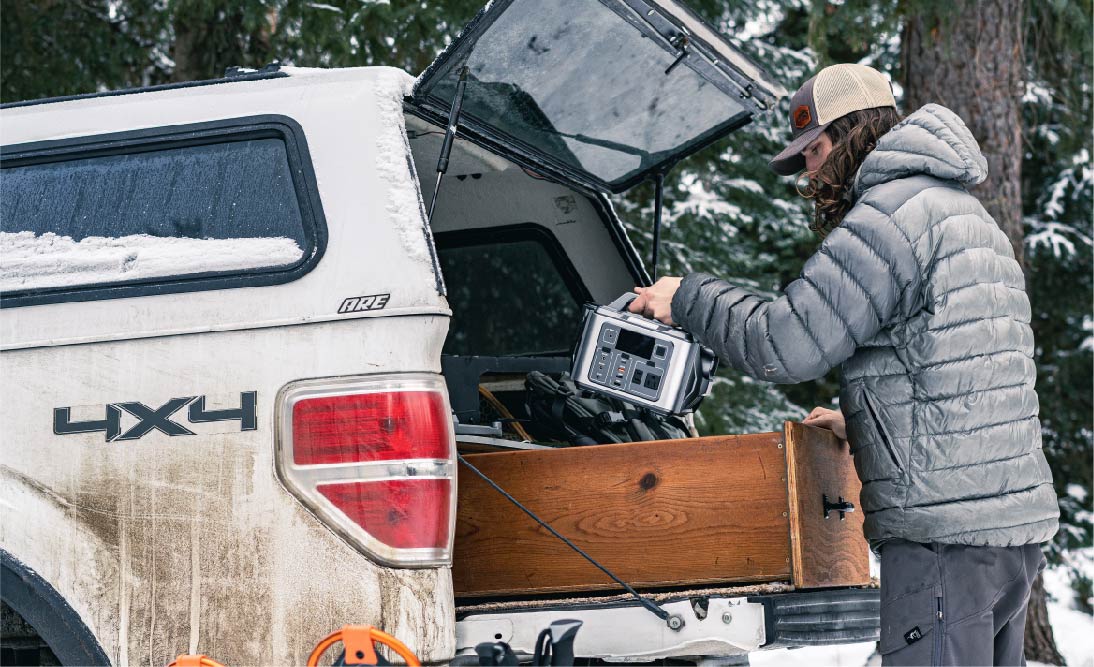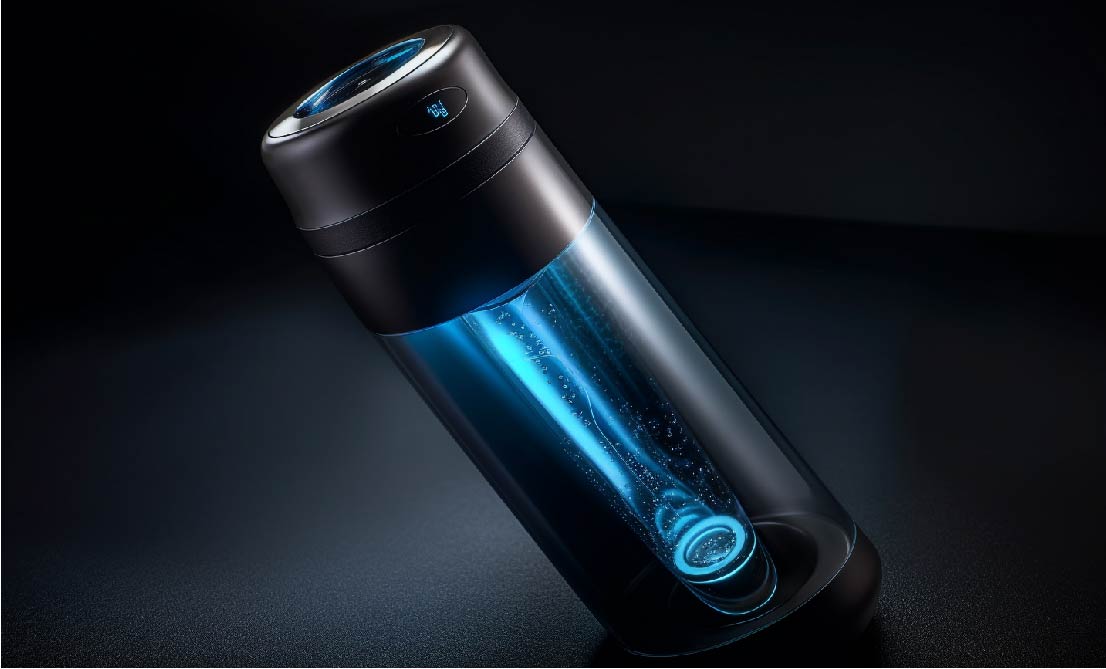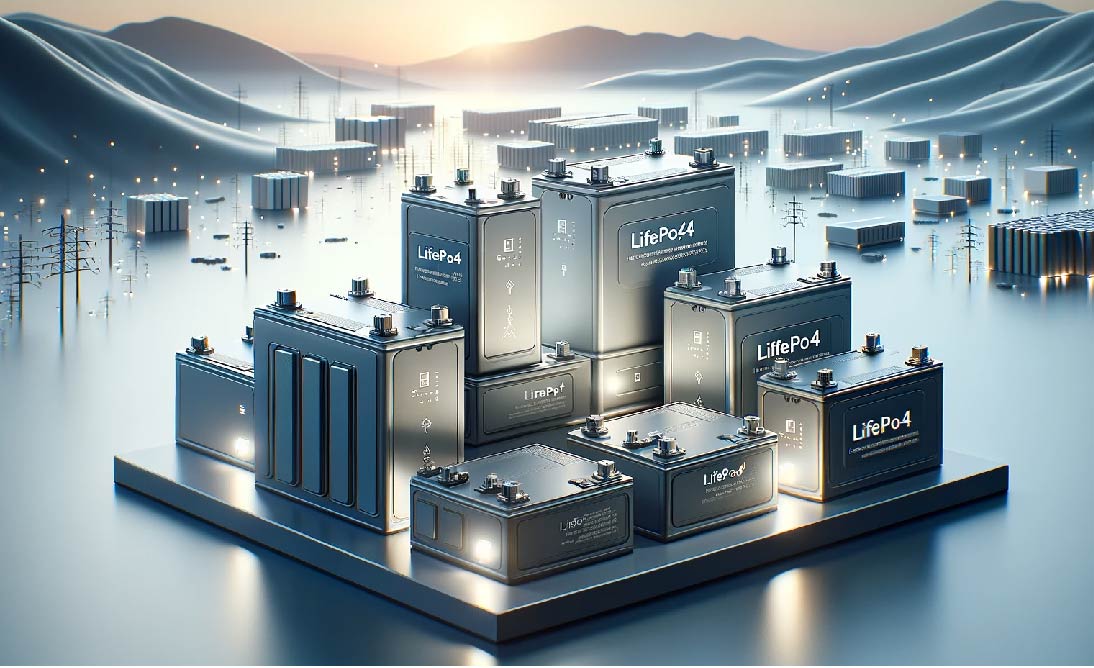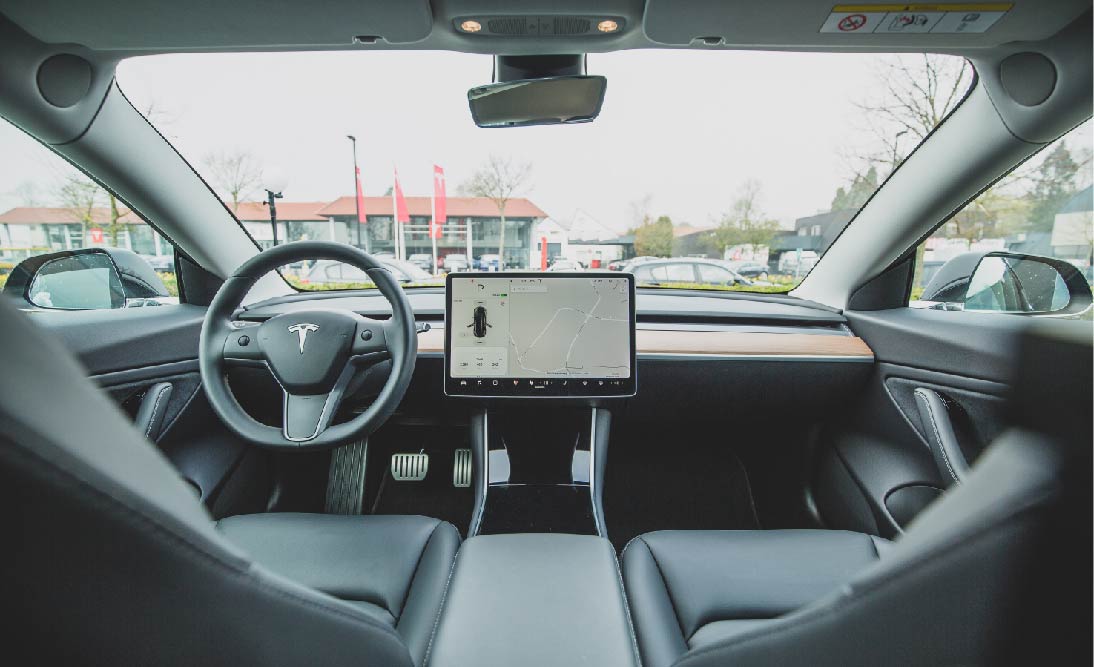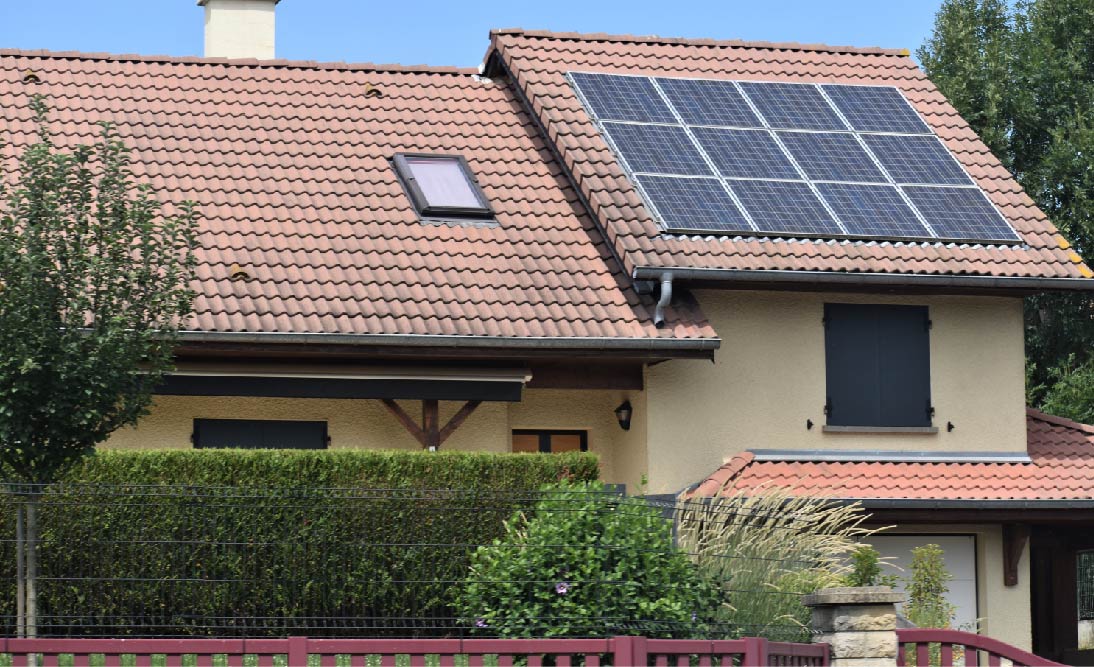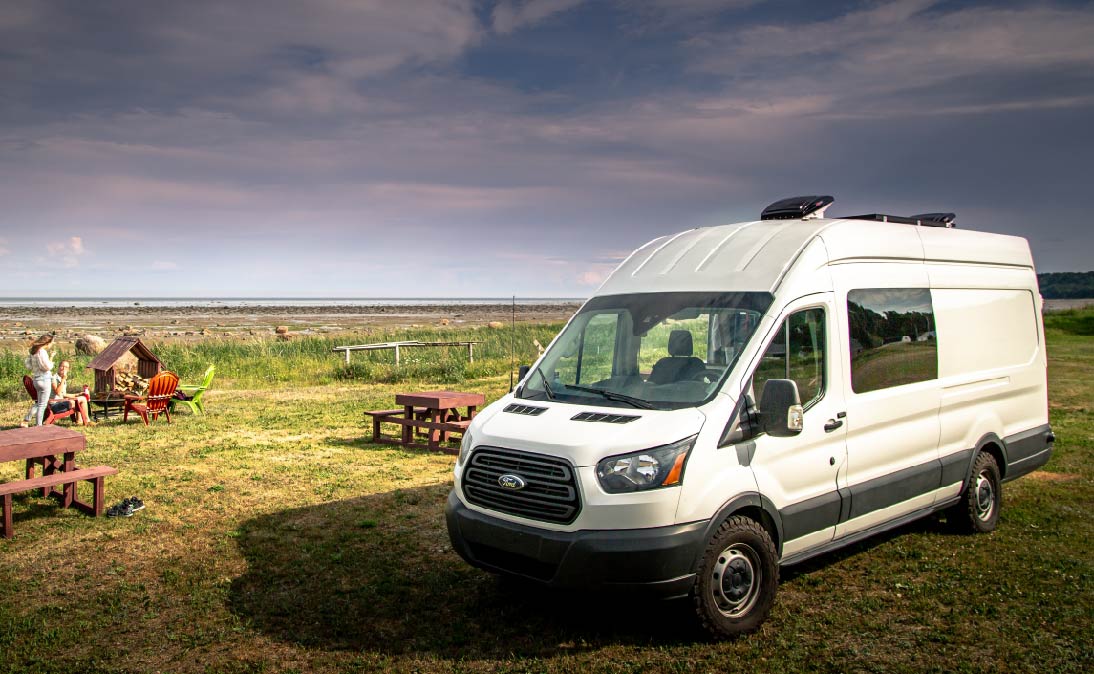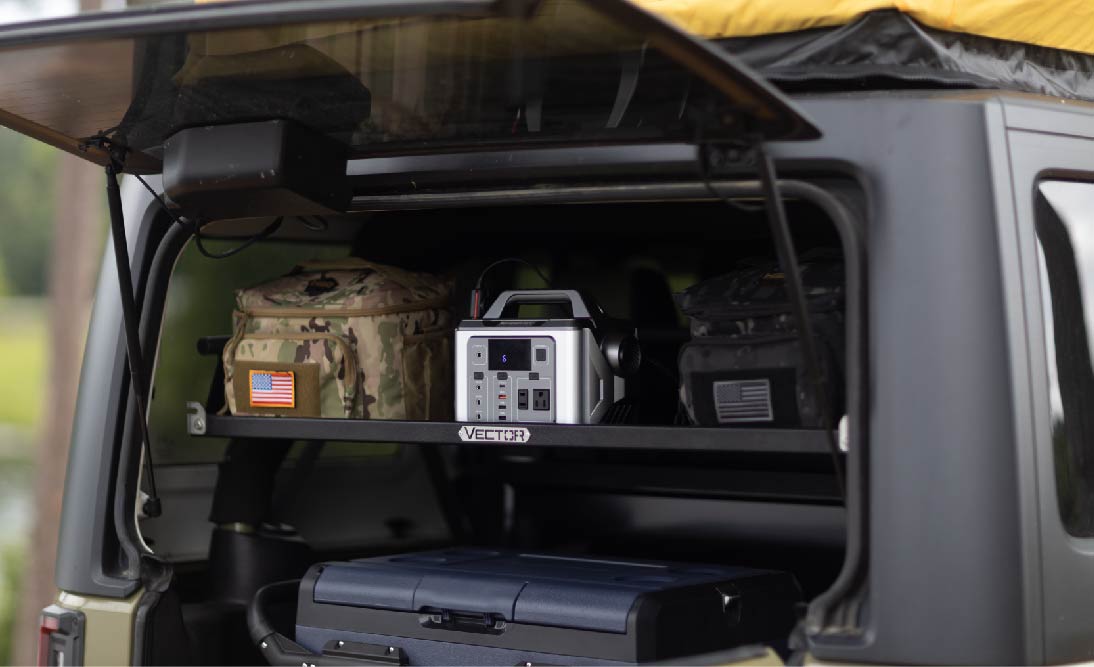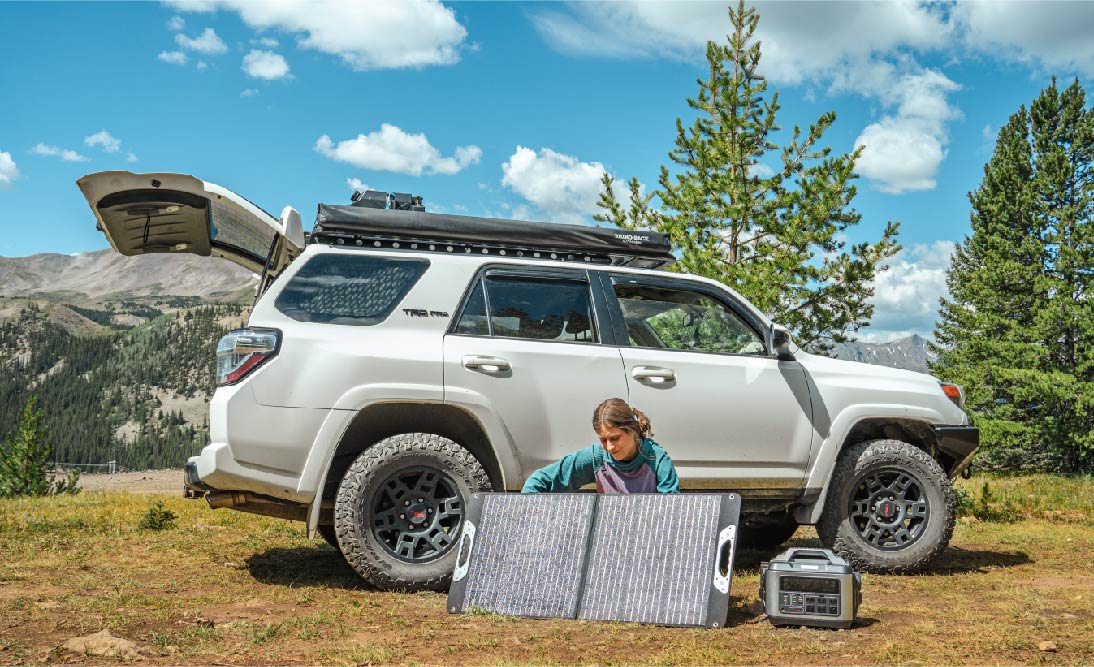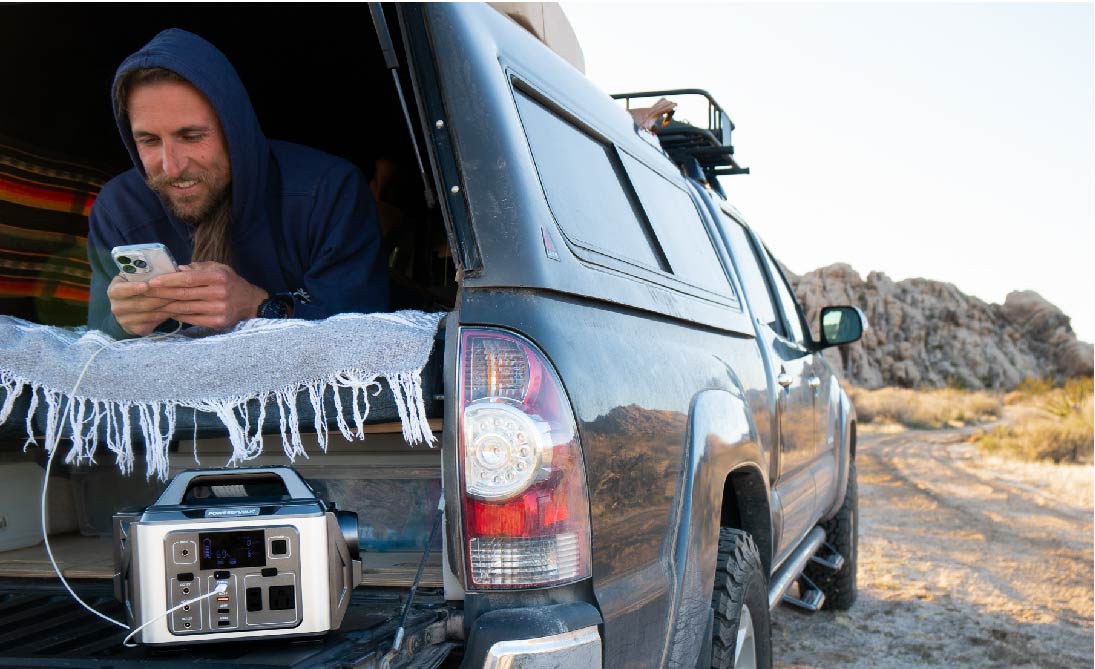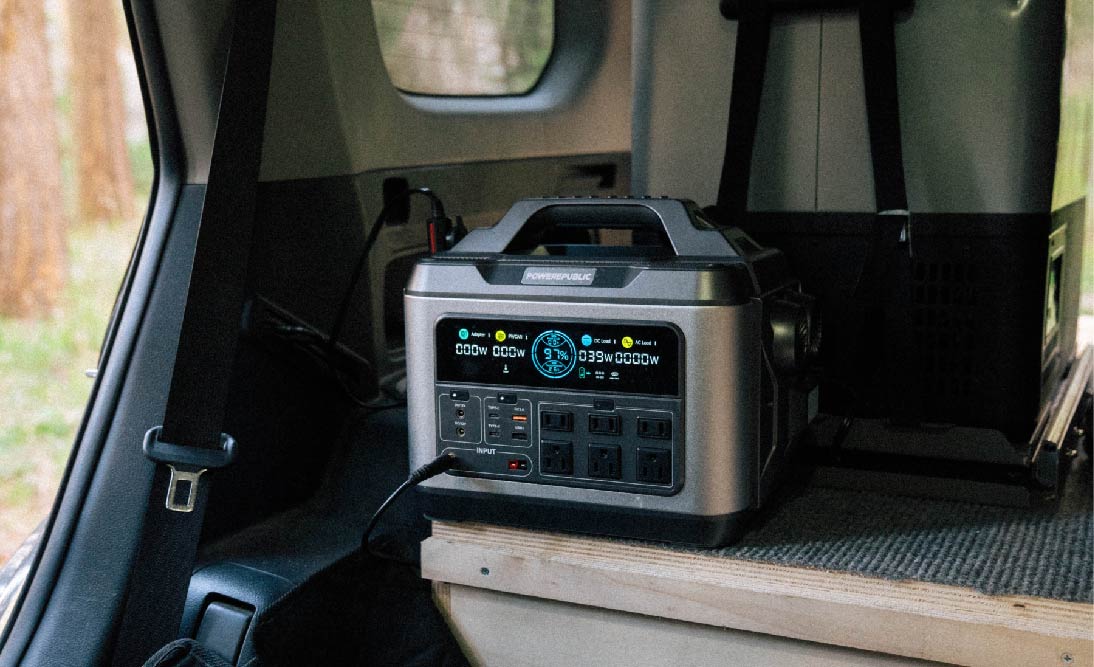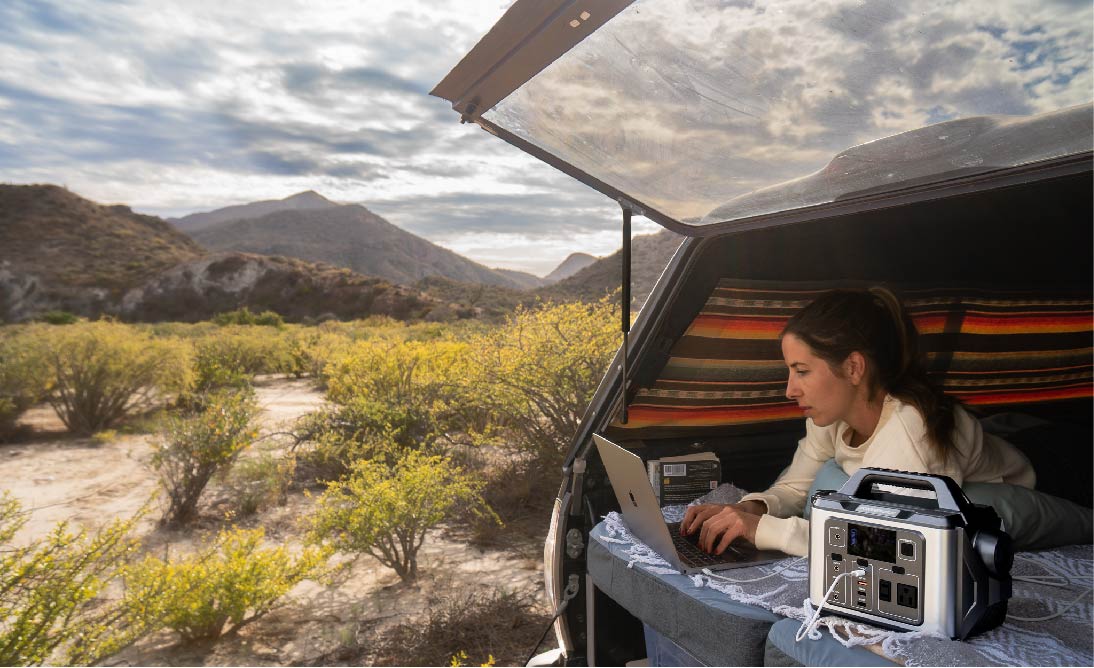Table of Contents:
-
FAQ I: How Do I Determine the Size of the Inverter for My DIY Solar Power Generator?
-
FAQ II: How Do I Calculate the Required Battery Capacity for My DIY Solar Power Generator?
-
FAQ III: How Can I Estimate the Number and Wattage of Solar Panels for My DIY Solar Power Generator?
Whether you live in a car, a van, an RV, or any off-grid setting, having reliable power sources to keep your devices and appliances charged and to back you up during power outages or extreme weather is extremely important. There are many power solution options on the market these days, and one of the most popular choices is a DIY solar power generator. Compared to traditional generators that rely on fossil fuels, DIY solar power generators use sunlight as the primary source of energy for generating electricity, offering a more sustainable power solution.
In this guide, we are going to talk about what a DIY solar power generator is, the types available, their price range, their benefits and drawbacks, and how to set up your own DIY solar power generator system. We hope you will find this guide helpful.
Let’s get started!
What is a DIY Solar Power Generator?

A DIY solar power generator, also known as a solar power station, is a system that harnesses the sun's energy to produce electricity for your devices and appliances. In general, the system has several main components that work together to capture, store, and distribute solar energy.
Here are the main components and their functions:
-
Solar Panels (Photovoltaic Cells): These are the key components responsible for converting sunlight into electricity. Solar panels consist of photovoltaic cells, which generate direct current (DC) when exposed to sunlight. There are mono-crystalline(higher efficiency) and poly-crystalline cells(lower efficiency). You can choose based on your budget and power needs.
-
Charge Controller: The charge controller plays a crucial role in managing the transfer of electrical energy from the solar panels to the batteries, safeguarding against battery overcharging to enhance their lifespan and maintain peak performance.
-
Battery Bank: The battery bank stores the electrical energy generated by the solar panels. This stored energy can be used during periods when there is no sunlight, such as at night or during cloudy days. Lithium-ion batteries, LiFePO4(LFP) batteries, and lead-acid batteries are 3 common types of batteries.
-
Power Inverter: Since solar panels produce direct current (DC), the power inverter is necessary to convert this direct current(DC) into alternating current (AC), which is the type of electricity used by most household appliances and electronic devices.
-
Wiring and Connectors: These components facilitate the connection between the solar panels, charge controller, battery bank, and power inverter. Proper wiring ensures the efficient transfer of electricity between the different components of the system.
-
Output Terminals: These terminals allow you to connect various devices and appliances to the solar power generator, enabling them to be powered by stored solar energy.
-
Monitoring System: Some solar power generators include a monitoring system that provides real-time data on the performance of the system, such as the amount of energy generated, battery charge level, and overall system health.
A DIY solar power generator provides a sustainable and renewable source of electricity, reducing reliance on traditional fossil fuel-based generators and contributing to a more environmentally friendly power solution.
Types Of DIY Solar Power Generators

There are various types of DIY solar power generators, each with its unique features and applications. Here are some common types:
1. Portable Solar Generators
-
Description: Portable solar generators are compact and lightweight systems designed for on-the-go use. They often include a foldable solar panel, a small battery bank, and built-in inverters.
-
Applications: Camping, hiking, emergency power backup, charging small electronic devices.
2. Stationary Solar Generators
-
Description: Stationary solar generators are larger systems designed for permanent or semi-permanent installations. They typically have a more extensive battery bank and higher power output.
-
Applications: Off-grid homes, cabins, remote installations, backup power for specific appliances.
3. Solar Generator Kits
-
Description: Solar generator kits come with all the necessary components and instructions for a DIY solar power system. They are designed for users to assemble and install the system themselves.
-
Applications: Residential use, educational projects, DIY enthusiasts.
4. Solar Briefcase Generators
-
Description: Solar briefcase generators are portable systems that fold into a compact briefcase-like form. They often include a smaller solar panel and are suitable for charging small devices.
-
Applications: Travel, business trips, charging electronic devices on the go.
5. RV Solar Power Systems
-
Description: RV solar power systems are designed specifically for recreational vehicles. They usually consist of solar panels installed on the roof, a charge controller, and an integrated inverter system.
-
Applications: Powering appliances and devices in RVs, reducing reliance on RV park electricity.
6. Emergency Solar Power Kits
-
Description: Emergency solar power kits are compact and easily deployable systems designed for quick power generation during emergencies. They often include a solar panel, battery, and essential electronics.
-
Applications: Emergency preparedness, power backup during natural disasters.
7. Grid-Tied Solar Generators
-
Description: These systems are connected to the grid but also have a battery backup for power storage. Excess energy generated during the day can be stored for later use or fed back into the grid.
-
Applications: Residential solar installations, reducing electricity bills, backup power during grid outages.
8. Off-Grid Solar Power Systems
-
Description: Off-grid solar power systems operate independently of the utility grid. They typically have a larger battery bank to store energy for use during periods without sunlight.
-
Applications: Remote locations without access to the grid, cabins, and off-grid homes.
9. Solar Power Generators with Wind Turbines
-
Description: Some DIY solar power generators may incorporate small wind turbines to generate power when there's not enough sunlight. This hybrid system provides more consistent power generation.
-
Applications: Areas with variable weather conditions, and increased power generation in low-light conditions.
When choosing a DIY solar power generator, consider factors such as your power needs, intended applications, available sunlight, and budget. Each type has its advantages and limitations, so it's essential to select the one that best fits your specific requirements.
Price Range of DIY Solar Power Generators

The price range of DIY solar power generators can vary widely based on factors such as the system's size, capacity, features, and included components.
Here's a general overview of price ranges for different types of DIY solar power generators:
Portable Solar Generators
-
Price Range: $200 to $1,500+
-
Factors Influencing Price: Capacity of the battery bank, power output, included accessories, and brand.
Stationary Solar Generators
-
Price Range: $1,000 to $10,000+
-
Factors Influencing Price: System capacity, battery storage, inverter size, and brand.
Solar Generator Kits
-
Price Range: $500 to $5,000+
-
Factors Influencing Price: Included components, capacity, and brand.
Solar Briefcase Generators
-
Price Range: $100 to $500+
-
Factors Influencing Price: Solar panel size, battery capacity, and brand.
RV Solar Power Systems
-
Price Range: $500 to $5,000+
-
Factors Influencing Price: Roof space available for solar panels, battery capacity, and inverter size.
Emergency Solar Power Kits
-
Price Range: $100 to $1,000+
-
Factors Influencing Price: Capacity, included components, and brand.
Grid-Tied Solar Generators
-
Price Range: $5,000 to $20,000+
-
Factors Influencing Price: System capacity, battery storage, inverter size, and installation costs.
Off-Grid Solar Power Systems
-
Price Range: $5,000 to $30,000+
-
Factors Influencing Price: System capacity, battery storage, inverter size, and installation costs.
Solar Power Generators with Wind Turbines
-
Price Range: $1,000 to $10,000+
-
Factors Influencing Price: Hybrid system capacity, included components, and brand.
It's important to note that these are general price ranges, and actual costs can vary based on specific brand preferences, quality of components, and installation requirements. DIY solar power projects may also require additional tools and materials, contributing to the overall cost. Additionally, prices for solar equipment have been decreasing in recent years, making these systems more accessible to a broader range of consumers.
DIY Solar Power Generator - Benefits and Limitations

Benefits of DIY Solar Power Generators
-
Renewable and Sustainable Energy Source: Solar power is a renewable and abundant energy source, reducing dependence on finite fossil fuels and contributing to environmental sustainability.
-
Lower Energy Costs: Once installed, DIY solar power generators can significantly reduce your electricity bills, providing long-term savings.
-
Off-Grid Power Generation: DIY solar generators enable off-grid living or temporary power solutions in remote locations where traditional power sources may be unavailable.
-
Reduced Carbon Footprints: Solar power is a clean energy source that produces minimal environmental pollution, contributing to lower carbon emissions and a smaller ecological footprint.
-
Low Operating and Maintenance Costs: Solar power systems generally have lower operating and maintenance costs compared to traditional generators, especially those relying on fossil fuels.
-
Scalability: DIY solar power systems can be scalable to meet specific energy needs. Additional solar panels or batteries can be added to the system as energy requirements increase.
-
Independence from Grid Outages: DIY solar generators with battery storage can provide a reliable source of electricity, ensuring continuous power for essential appliances when facing unexpected blackouts.
-
Educational and DIY Satisfaction: Building and maintaining a DIY solar power generator can be a satisfying and educational experience, providing a deeper understanding of renewable energy systems.
Limitations of DIY Solar Power Generators
-
High Cost: The cost of solar panels, batteries, inverters, and other components can be very expensive, although this is offset by long-term savings.
-
Weather Dependency: Solar power generation is dependent on sunlight, making these systems less effective during cloudy days or at night. Additional energy storage (batteries) helps mitigate this limitation.
-
Space Requirements: In some settings or areas with restricted open space, the challenge arises as solar panels necessitate ample space and exposure to sunlight to produce the requisite power.
-
DIY Complexity: Building and installing a DIY solar power generator can be complex and may require technical skills. Improper installation can lead to inefficiencies or system failures.
-
Variable Efficiency: The inconsistent performance of DIY solar generators is a result of varying efficiency, influenced by factors such as the quality of components, installation, and environmental conditions.
-
Limited Power Output at Night: Without sufficient battery storage, DIY solar generators cannot generate power at night, potentially requiring an alternative power source during those periods.
-
Limited Durability of Components: The durability of DIY solar power system components may vary, and suboptimal choices may lead to faster wear and tear, affecting overall system longevity.
-
Regulatory Compliance: DIY solar installations may need to comply with local regulations and building codes. Failure to adhere to these requirements can result in legal issues and safety concerns.
While DIY solar power generators offer numerous benefits, it's crucial for individuals to carefully consider their specific energy needs, budget, and technical capabilities before embarking on a solar power project. Professional consultation or assistance may be necessary for complex installations or larger systems.
How To Set Up Your DIY Solar Power Generator?

Building a DIY solar power generator can be a rewarding yet complicated project that provides you with a reliable source of clean energy. Keep in mind that this is a simplified guide, and you should always follow safety guidelines and local regulations. Also, the efficiency of your system relies on factors like sunlight exposure, location, and the quality of components.
Materials Needed
Solar Panels:
-
Choose the appropriate wattage based on your energy needs. For example, if your daily energy consumption is 3000Wh, and you receive 5 hours of sunlight, you'd need at least 600W of solar panels (3000Wh / 5h).
-
Example: Two 300W solar panels for a total of 600W.
Charge Controller:
-
To avert overcharging, the charge controller manages both voltage and current flowing from the solar panels to the battery, ensuring proper regulation of electrical input.
-
Example: A 30A MPPT charge controller.
Battery:
-
Select deep-cycle batteries designed for solar applications.
-
Determine the battery capacity (Ah) needed based on your energy consumption and desired backup time.
-
Example: One 12V, 100Ah deep-cycle battery.
Inverter:
-
An inverter converts DC power from the batteries to AC power for your appliances.
-
Choose an inverter with sufficient capacity for your needs.
-
Example: A 1000W pure sine wave inverter.
Wiring and Connectors:
-
Use appropriate gauge wiring based on the distance between components.
-
Example: 10 AWG solar cables with MC4 connectors.
Mounting Hardware:
-
Racks or mounts for securing solar panels.
Other Tools:
-
Screwdrivers, pliers, wire stripper, drill, multimeter, crimping tool, ladder.
Steps to Set Up Your DIY Solar Power Generator:
Step 1: Energy Needs Assessment
Before diving into the world of solar power, it's crucial to understand your energy needs. Calculate your daily energy consumption in watt-hours (Wh) by considering the appliances you wish to power and their respective energy requirements. Let's say your daily energy consumption is 4000Wh.
Step 2: Solar Panel Sizing
Selecting the right solar panels is pivotal. Determine the total wattage needed by dividing your daily energy consumption by the average daily sunlight hours. If you receive around 5 hours of sunlight daily, you'd need at least 800W of solar panels (4000Wh / 5h).
Example: Two 400W solar panels can provide a total of 800W.
Step 3: Charge Controller Selection
To prevent overcharging and optimize charging efficiency, choose a charge controller. The controller's current rating should match or exceed the total current output of your solar panels. For instance, if each solar panel has a current output of 9A, and you have two panels, a 20A charge controller would be suitable.
Step 4: Battery Capacity Calculation
Select deep-cycle batteries designed for solar applications. Calculate the required battery capacity using the formula: Battery Capacity (Ah) = Daily Energy Consumption (Wh) / Battery Voltage (V). If you opt for a 24V system, the required capacity would be 4000Wh / 24V = 167Ah.
Example: Choose two 12V, 200Ah deep-cycle batteries for a total capacity of 400Ah.
Step 5: Inverter Sizing
The inverter converts DC power from the batteries to AC power for your appliances. Choose an inverter with sufficient capacity for your needs. If your appliances require a maximum of 1000W, a 1500W inverter would provide a suitable buffer.
Step 6: Wiring and Connectors
Use proper gauge wiring based on the distance between components. For instance, if the distance between the solar panels and the charge controller is 20 feet, 10 AWG wiring would be appropriate. Ensure you have the right connectors, such as MC4 connectors for the solar panels.
Step 7: Mounting and Installation
Install mounts or racks for securing the solar panels. Position them in a location with maximum sunlight exposure, free from shading. Connect the solar panels in series or parallel, depending on your system voltage, and wire them to the charge controller. Mount the charge controller near the batteries and connect the battery bank. Finally, connect the inverter to the charge controller.
By following these steps and customizing the specifications based on your unique requirements, you can set up a DIY solar power generator that aligns with your energy needs and contributes to a more sustainable future. Always prioritize safety, adhere to local regulations, and enjoy the benefits of clean, renewable energy.
FAQ I: How Do I Determine the Size of the Inverter for My DIY Solar Power Generator?

Estimating the inverter size involves considering the maximum power your appliances may consume simultaneously and accounting for efficiency. Here's a detailed guide:
-
Identify Maximum Appliance Power: List the maximum power consumption (in watts) of all appliances you plan to power simultaneously. For example, let's say your appliances may consume up to 1000W simultaneously.
-
Factor in Efficiency Losses: Inverters typically operate with an efficiency factor, commonly around 90-95%. Assume an efficiency factor of 90% for this example.
-
Calculate Total Load: Add up the maximum power consumption of all appliances and divide by the efficiency factor. For instance, if the total maximum load is 1000W, the adjusted calculation would be 1000W / 0.9 = 1111.1W.
-
Choose Inverter Capacity: Select an inverter with a capacity slightly higher than the adjusted total load to provide a buffer. In this case, a 1200W inverter would be suitable.
By following these steps and considering efficiency factors, you can estimate the size of the inverter for your DIY solar power generator more accurately.
FAQ II: How Do I Calculate the Required Battery Capacity for My DIY Solar Power Generator?

Calculating battery capacity involves determining daily energy consumption, and battery voltage, and considering efficiency factors. Here's a detailed guide:
-
Calculate Daily Energy Consumption: Determine your daily energy needs in watt-hours (Wh). For example, if your daily consumption is 4000Wh, that's your starting point.
-
Determine Battery Voltage: Decide on the battery voltage for your system. Let's assume a 24V system for this example.
-
Factor in Efficiency Losses: Consider an efficiency factor for the entire system. A common efficiency factor is around 90%. Assume this for the example.
-
Calculate Required Battery Capacity: Use the formula: Battery Capacity (Ah) = Daily Energy Consumption (Wh) / (Battery Voltage (V) × Efficiency Factor). For instance, with a 24V system and a daily consumption of 4000Wh, the adjusted calculation would be 4000Wh / (24V × 0.9) = 185.2Ah.
-
Choose Battery Configuration: Select batteries with a total capacity that meets or exceeds the calculated value. For example, two 12V, 200Ah batteries would provide a total capacity of 400Ah.
By following these steps and considering efficiency factors, you can estimate the required battery capacity for your DIY solar power generator more accurately.
FAQ III: How Can I Estimate the Number and Wattage of Solar Panels for My DIY Solar Power Generator?

Calculating the number and wattage of solar panels involves considering daily energy consumption, average sunlight hours, and efficiency factors. Here's a step-by-step guide:
-
Calculate Daily Energy Consumption: Determine your daily energy needs in watt-hours (Wh). For example, if your daily consumption is 4000Wh, that's your starting point.
-
Determine Average Sunlight Hours: Research the average sunlight hours in your location. Let's assume 5 hours per day as an example.
-
Calculate Total Daily Energy Generation: Divide your daily consumption by the average sunlight hours. In this case, 4000Wh / 5h = 800W.
-
Factor in Efficiency Losses: Account for efficiency losses due to shading, panel degradation, and other factors. A common efficiency factor is 80-85%. Let's use 85% for this example.
-
Calculate Required Solar Panel Wattage: Divide the total daily energy generation by the efficiency factor. For example, 800W / 0.85 = 941W.
-
Choose Solar Panels: Select solar panels with a total wattage slightly higher than the calculated value to ensure optimal performance. In this case, two 500W solar panels could be a suitable choice.
By following these steps and considering efficiency factors, you can estimate the number and wattage of solar panels needed for your DIY solar power generator more accurately. Always check the specifications of the chosen solar panels and consult with professionals for precise system design.
Final Thoughts
In conclusion, embarking on a DIY solar power generator offers a sustainable and cost-effective solution for powering various applications, whether in off-grid living, emergency preparedness, or reducing reliance on traditional energy sources. Understanding the components, sizing considerations, and efficiency factors is crucial for a successful setup. The versatility of DIY solar power generators, ranging from portable options to stationary systems, allows for customization based on individual energy needs and preferences.
Despite the initial investment and considerations of weather dependency, the benefits of reduced energy costs, environmental impact, and increased energy independence make DIY solar power generators an appealing choice. By following the provided guidelines and seeking professional advice when needed, individuals can harness the sun's energy to create a reliable and eco-friendly power source for a brighter and more sustainable future. Dive into the world of DIY solar power generation and enjoy the rewards of clean, renewable energy.
